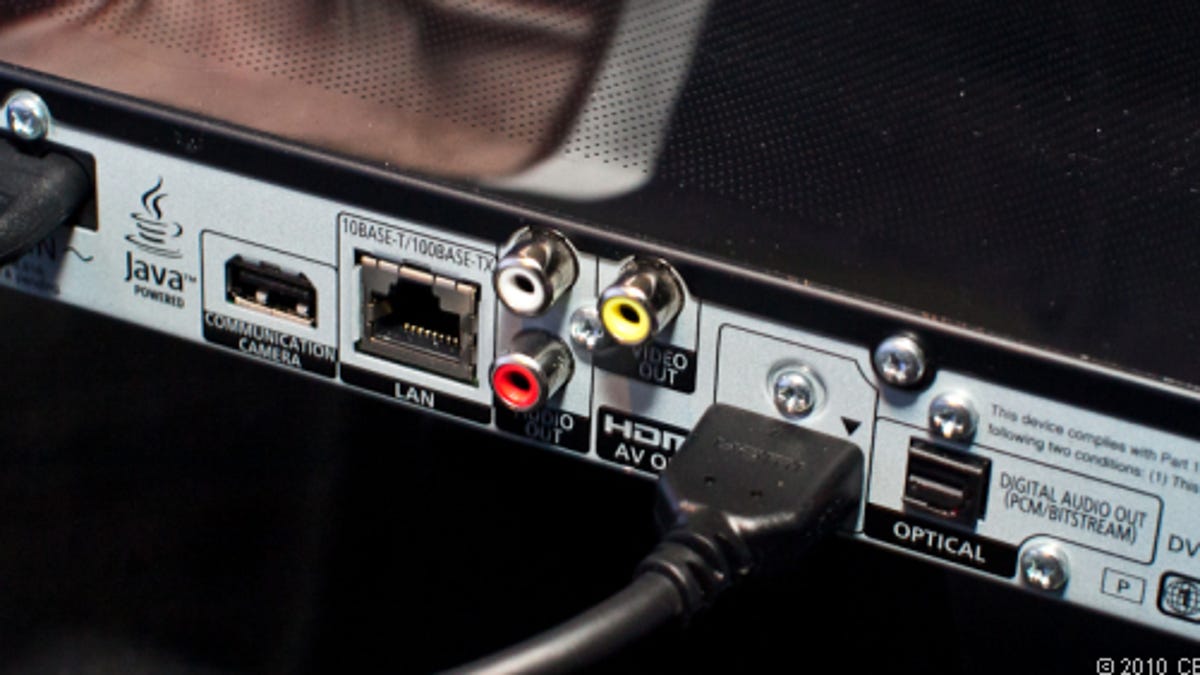Component video is missing or crippled on 2011 Blu-ray players: Here's why
Many 2011 Blu-ray players will lack component video outputs and even if they have them, they'll be limited to standard-definition signals, thanks to outdated copyright protection rules.

If you plan on buying a Blu-ray player in 2011, don't be surprised if the back panel is lacking a component video output. A surprising number of mainstream 2011 Blu-ray players, (such as the Panasonic DMP-BDT210, Samsung BD-D5700, LG BD670, to name a few) are omitting the red, green, and blue video jacks, which means buyers will have to rely on HDMI for high-def Blu-ray video signals.
It's all about AACS
We can't blame manufacturers for omitting the component out of new players. For one, it's not a huge loss, as the vast majority of buyers will be using the HDMI output for video. But there's another issue: even the new Blu-ray players that are including component video connections will only output 480i signals, rather than high-def 1080i.
That's not because of cost-cutting measures, but rather the rules of the AACS, which is the standard for copyright protection on Blu-ray. As highlighted by Ultimate AV, the AACS Adopter Agreement states that "any Licensed Player manufactured after December 31, 2010, shall limit analog video outputs for Decrypted AACS Content to SD Interlace Modes only." We just received a few 2011 Blu-ray player review samples and can confirm that component video outputs are in fact limited to 480i. And in 2014, due to AACS rules, manufacturers won't be allowed to include component video outputs at all, even at standard resolution.
The reality is that these changes will have almost no effect for most people with modern HDTVs, but there are still some early HDTV adopters--those component-video-only models sold before the HDMI standard became prevalent--who will be out of luck. And even if you've bought a new HDTV, it still limits your ability to use that first-gen HDTV in a second room with a new Blu-ray player.
No need to plug the 'analog hole'
The most frustrating part of all this is that it's completely unnecessary. There's no reason for pirates to deal with the cumbersome analog signals when it's easy to rip Blu-ray movies digitally. There are plenty of Blu-ray-ripping guides available from mainstream publishers like Tested, Maximum PC, and Digital Trends, and not one of them mentions capturing an analog signal.
The irony is that the AACS rules will do virtually nothing to hurt pirates, but will hurt some HDTV early adopters, whose investment in HDTV made it possible for Blu-ray to become popular in the first place.

